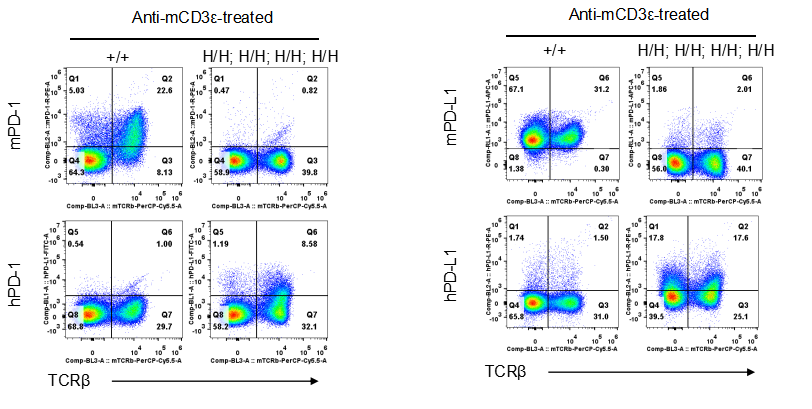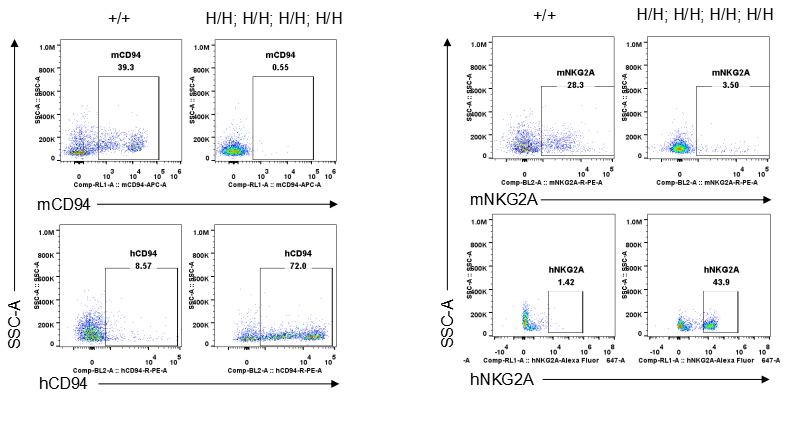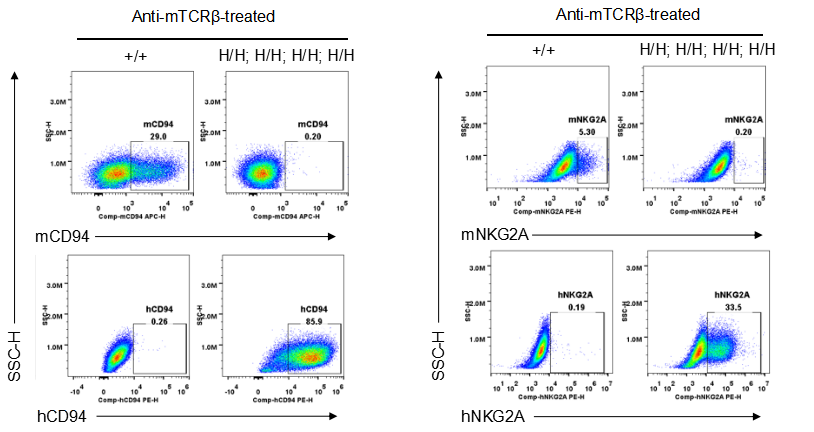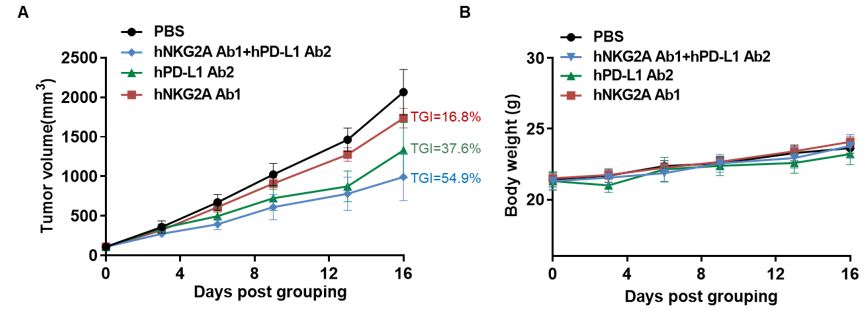| Strain Name |
C57BL/6-Pdcd1tm1(PDCD1)BcgenCd274tm1(CD274)BcgenKlrd1tm1(KLRD1)BcgenKlrc1tm1(KLRC1)Bcgen/Bcgen
|
Common Name | B-hPD-1/hPD-L1/hCD94/hNKG2A mice |
| Background | C57BL/6 | Catalog number | 111848 |
|
Related Genes |
CD94,KLRD1, NKG2A, KLRC1, CD159a; PD-1 (Programmed death-1) ; CD274 (CD274 antigen) |
||



Strain specific CD94 and NKG2A expression analysis in homozygous B-hPD-1/hPD-L1/hCD94/hNKG2A mice by flow cytometry. Splenocytes were collected from wild type mice and homozygous B-hPD-1/hPD-L1/hCD94/hNKG2A mice (H/H; H/H; H/H; H/H), and analyzed by flow cytometry with species-specific CD94 or NKG2A antibody. Spleen cells were stimulated for the 5 days coated with 5 μg/ml anti-TCRβ mAb before analysis. Mouse CD94 and NKG2A were detectable in wild type mice. Human CD94 and NKG2A were exclusively detectable in homozygous B-hPD-1/hPD-L1/hCD94/hNKG2A mice but not wild type mice. (Monalizumab was used to detect the human NKG2A expression)
Combination therapy of anti-human PD-L1 antibody and anti-human NKG2A antibody

Antitumor activity of anti-human NKG2A antibodies and anti-human PD-L1 antibodies in B-hPD-1/hPDL1/hCD94/hNKG2A mice. (A) Anti-human NKG2A antibodies (in house) combined with anti-human PD-L1 antibodies (in house) inhibited B-hHLA-E plus/hPD-L1 MC38 tumor growth in B-hPD-1/hPDL1/hCD94/hNKG2A mice. Murine colon cancer B-hHLA-E plus/hPD-L1 MC38 cells were subcutaneously implanted into homozygous B-hPD-1/hPDL1/hCD94/hNKG2A (female, 7-8-week-old, n=6). Mice were grouped when tumor volume reached approximately 100 mm3, at which time they were treated with anti-hNKG2A Ab1 and anti-hPD-L1 Ab2. (B) Body weight changes during treatment. As shown in panel A, combination of hPD-L1 and hNKG2A antibodies were more efficacious in controlling tumor growth in B-hPD-1/hPDL1/hCD94/hNKG2A mice. B-hPD-1/hPDL1/hCD94/hNKG2A mice is a powerful preclinical model for in vivo evaluation of anti-human PD-L1 and NKG2A antibodies. Values are expressed as mean ± SEM.












 京公网安备:
京公网安备: